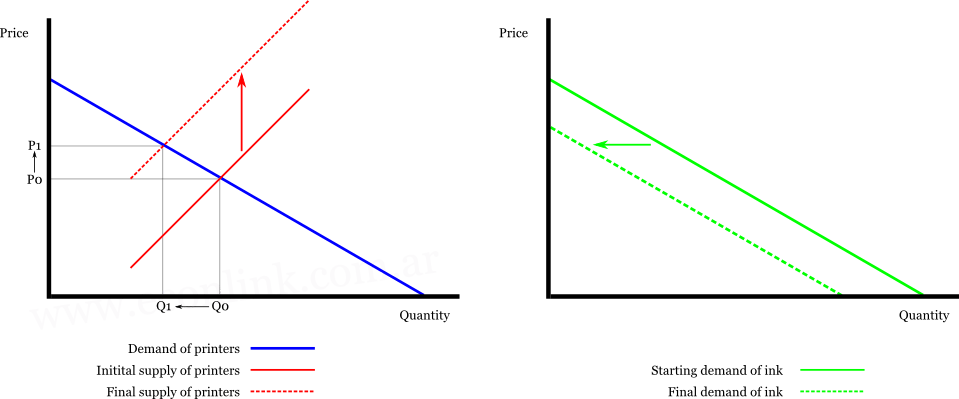Complementary Goods
Definition of Complementary Goods
Complementary goods are goods that are usually consumed together or that have the ability to provide a higher utility when consumed together.
Examples of Complementary Goods
- Printers and ink
- Seeds and fertilizers
- DVD players and DVD disks
- Car and fuel
Demand of Complementary Goods
When two goods are complementary, the demand for one generates a demand for the second one. In many cases, a complementary good doesn’t have any value if it is consumed alone. For example, a car doesn’t have any utility if it doesn’t have fuel.
If the price of a good diminishes, the quantity consumed increases. But what happens with the quantity of a complementary good? Because they are consumed together, the demand of a complementary good also increases.
Complementary Goods Graph

Let’s suppose that the supply of printers moves upwards because the price of an input becomes more expensive. The price of printers rises from P0 to P1. As a consequence of the printers price increase, the quantity of printers consumed will diminish. But, because of the decrease in the consumption of printers, the consumption of printers ink will also decrease.
Cross Elasticity of Complementary Goods
The cross elasticity of 2 goods measures the sensitivity or responsiveness of the demand of a good, when the price of another good changes. It is defined as the percent change it the quantity, divided the percent change in the price.
Cross Elasticity of Good A with respect to Good B = Percent Change in Quantity of Good A / Percent change in the price of Good B
eAB = (ΔQA/QA)/(ΔPB/PB)
When 2 goods are complementary, if the price of one good increases (+), the quantity consumed of the second also increases (+). So, the cross elasticity of complementary goods is positive.